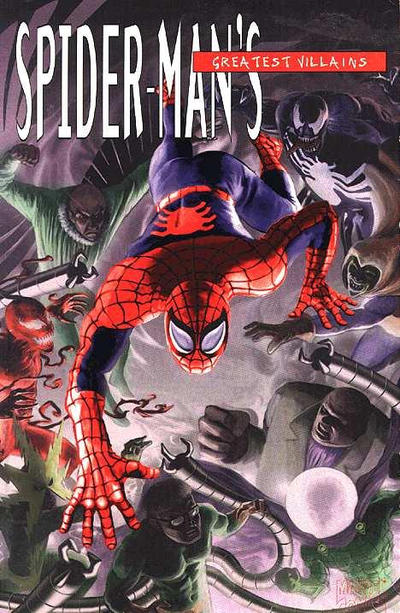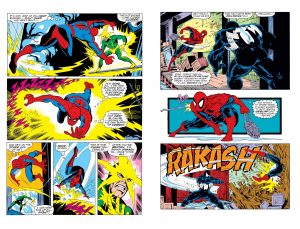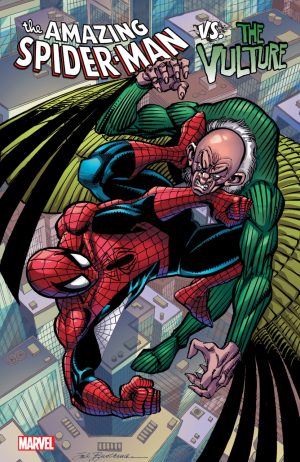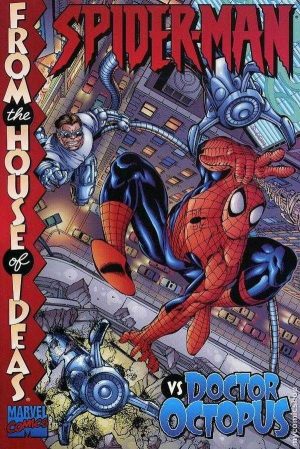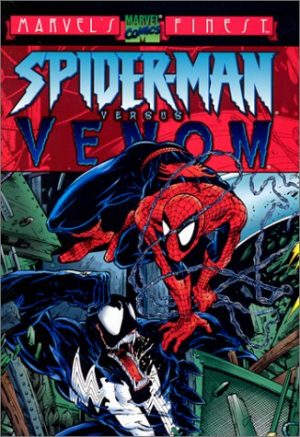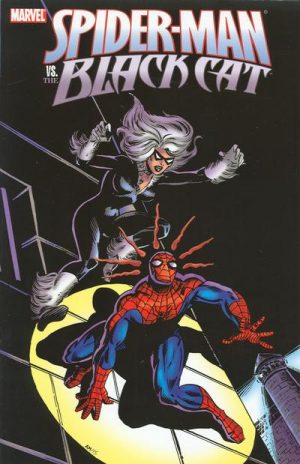Review by Ian Keogh
To issue a round-up of stories featuring Spider-Man’s greatest villains and somehow miss out Green Goblin could be considered a major omission. This is notwithstanding there being a separate Spider-Man vs. Green Goblin collection, and the Hobgoblin being present. Even considering the original version had been dead for twenty years before this collection, the mantle had been passed from Norman Osborn to Harry Osborn. Forget about that, however, and the villains people want to see are here. In addition to Hobgoblin there’s Carnage, Dr Octopus, Electro, the Kingpin, Mysterio, Venom and the Vulture. It’s possible to quibble about there being no Kraven, Lizard or Scorpion, but apart from Green Goblin as a collection its inclusive.
It’s heavily weighed to material from the 1960s, occupying half the content. That’s presumably because it becomes harder to source single issue stories once the sixties are left behind. Steve Ditko’s look is now dated, what with Peter Parker in his yellow tank top, but the stories he plotted with Stan Lee are economically told and both feature viable problems. Doctor Octopus unmasks Spider-Man, and Mysterio’s antics convince him he’s been committing crimes in his sleep. It’s John Romita’s more graphic style responsible for battles with the Kingpin and Electro, and the glamour he gave the supporting cast still shines through. Lee’s infusion of contemporary subplots is interesting, but for the Kingpin story he’s coasting, filling the pages with one long fight instead of much plot. Electro’s appearance is set up better as Spider-Man hits on TV as a method of making money.
Twelve years separate Electro’s rampage from 1982’s Vulture story, by which time John Romita Jr is illustrating Spider-Man. At that stage his art was very much influenced by his father’s work, which gives it solid and imaginative storytelling, and Roger Stern sets up the nice surprise of the Vulture being in the same nursing home as Peter Parker’s Aunt May. Fabian Nicieza and Alex Saviuk’s Hobgoblin tale has the novelty of Spider-Man being in his black costume before the introduction of Venom, but the scenes of Peter Parker’s party are more interesting than the battle with the Hobgoblin, who’s rather a pitiful specimen.
At the time of the Venom story, Todd McFarlane’s another artist edging toward a style, but David Michelinie’s writing could have been a Spider-Man story from the 1960s, not 1989. All things considered, the following issue with more Spider-Man vs Venom action would have been a better bet. Micheline also writes the gratuitous nastiness of Carnage, which is more in tune with the times, but hardly sparkling, and Steven Butler’s art lacks the finesse of other illustrators presented.
Spider-Man’s Greatest Villains is a collection for the uninitiated, not for the big fan, a gift book rather than one to stick on the shelf, and one of the Spider-Man vs collections will provide better value and entertainment overall.
